Tourism Notes 7th Social Science
Tourism Notes 7th Social Science
7th Social Science Lesson 13 Notes in English
13. Tourism
Introduction:
- The word tourist was derived from an old English word “tourian” which refers to a person who travels out of his usual environment for not more than one year and less than 24 hours.
- The purpose of travel may be religious, recreation, business, historical and cultural.
The Basic components of Tourism:
- Tourism has become an important source of income for many regions and even for the entire countries of the world.
- Tourism is an essential part of the life of the society because of its direct impact on social, cultural, educational and economic sector of the nation and on their international relations too. The three main components of tourism are
- Attraction
- Accessibility
- Amenities.
- These three components are together known as A3 concept.
Attractions:
Attractions mainly comprise of two types such as:
- Natural attraction
- Cultural attraction
Natural attraction includes landscape, seascape, beaches, climatic condition and forests.
Cultural attraction are historic monuments and other intellectual creations. Apart from this, cultural attractions also includes fairs and festivals.
Accessibility:
Accessibility means reachability to a particular place of attraction through various means of transportation such as road, rail, water and air. Transport decides the cost of travel and the time consumed in reaching or accessing a specific attraction.
Amenities:
Amenities are the facilities that cater to the needs of a tourist.
- Accommodations in terms of hotels, restaurants, cafes and other staying units.
- Travel organizers, Tour operators and Travel Agents
- Foreign exchange centres, passport and visa agencies
- Sectors related to Travel Insurance, Safety and Security
7th Social Book Back Questions
Types of Tourism:
From the ancient times, travel is a fascination for mankind. Tourism can be divided on the basis of nature, utility, time and distance as indicated below.
- Religious tourism
- Cultural tourism
- Historical tourism
- Eco-Tourism
- Adventure tourism
- Recreational tourism
Religious Tourism
- Religious tourism is one of the oldest type of tourism, wherein people travel individually or in groups for pilgrimage to a religious location such as temples, churches, mosques and other religious places.
- Religious tour to Kasi (Varanasi) by Hindus, to Jerusalem by Christians and to Mecca by Muslims are few of the examples for religious tourism.
Historical Tourism
It focuses on visiting historically important places like museums, monuments, archaeological areas, forts, temples and so on. Angkorwat of Cambodia, Tajmahal of India and Pyramids of Egypt are some of the examples to quote for Historical Tourism.
Eco-Tourism
Eco tourism typically involves travel to destinations where plants and animals thrive in a naturally preserved environment. Amazon rain forest, African forest safari, trekking in the slopes of Himalayas are the famous incredible Eco friendly attractions.
Adventure Tourism
Adventure tourism is a type of tourism involving travel to remote or exotic places in order to take part in physically challenging outdoor activities. For e.g. sky dive in Australia, Bungee jumping in New Zealand, mountaineering in the peaks of Himalayas, rafting in the Brahmaputra River at Arunachala Pradesh.
Recreational Tourism
This type of tourism aims at enjoyment, amusement or pleasure are mainly for ‘fun activity’. Waterfalls, hill stations, beaches, and amusement parks are the attractive spots for recreational tourism.
Apart from this, there are certain modern types of tourism, which got developed in recent years. They are
- Annual Holiday tourism
- Industrial Tourism
- Seasonal Tourism
- International Tourism
- Group Tourism
- Sports Tourism
- Health Tourism
- Farm and Rural Tourism.
Basic Elements of Tourism attractions
Certain elements are fundamental to attract tourists as travel destinations. They are
- Pleasant weather
- Scenic beauty
- Historical and cultural monuments
Geographical Components of Tourism
- Landforms : Mountains, Plateaus, Canyons, Valleys, Caves, Cirques, Sand dunes, Coral reefs, Cliffs, etc.
- Water: Rivers, Lakes, Waterfalls, Hot springs and Geysers, Snow and Glacier, Water Currents, Tides and Waves.
- Vegetation: Forest, Grasslands, Moors, Deserts etc.
- Climate: Sunshine, Clouds, Admirable Temperature, Rain and Snow.
- Animal life: (a) Wildlife : Birds, Game Reserves, Zoos. (b) Hunting and Fishing
- Settlement features: (a) Towns, Cities, Villages (b) Historical remains and Monuments
Tourism Attractions in India
- India is a country known for its gentle hospitality with spicy food and culture.
- Visitor friendly traditions with varied life style, culture, heritage, colourful fairs and festivals are abiding attractions for the tourists.
- All types of land form, varied climate, rich resources for eco and adventure tourism are the versatile specialty of India.
- Technological parks and science museums, pilgrimage centers with wonderful art and architecture are an added advantage for tourists.
- Yoga, Ayurveda and Natural remedial Health resorts attract tourists from all over the world.
Religious Tourism
- India being a multi-religious country, religious tourism is the most popular type of tourism.
- Various package tours are organized for the people to attend the religious rituals and to visit places of religious importance.
- Most famous religious spots of India are as follows:
- Rameswaram – Tamil Nadu
- Kanchipuram – Tamil Nadu
- Varanasi(Kasi) – Uttarpradesh
- Saranath – Uttarpradesh
- Vaishnavadevi temple – Jammu & Kashmir
- St. Francis Xavier Cathedral – Goa
- Amritsar – Punjab
- Monasteries of Ladakh – Jammu & Kashmir
Scenic attraction is a very important factor in tourism. Scenery consisting of Mountains, Lakes, Waterfall, Glacier, Forests, and Deserts are the major features attracting people to visit them. India is blessed with nature and gifted with immense beauty from rolling hills to deep valley and snow covered mountains to lush green carpet.
Hill Stations in India
- The Indian sub continent has seven principal mountains ranges and the largest of all is the Himalayas that lie in the northern part of India.
- Most of the Himalayan hill stations in India are located in states of Jammu and Kashmir, Himachal Pradesh, Uttarakhand, Sikkim, West Bengal, Arunachal Pradesh, Nagaland and Meghalaya. Maharashtra, Karnataka, Tamil Nadu and Kerala have hill stations in the Western Ghats.
- Andhra Pradesh, Odisha have hill stations in the Eastern Ghats.
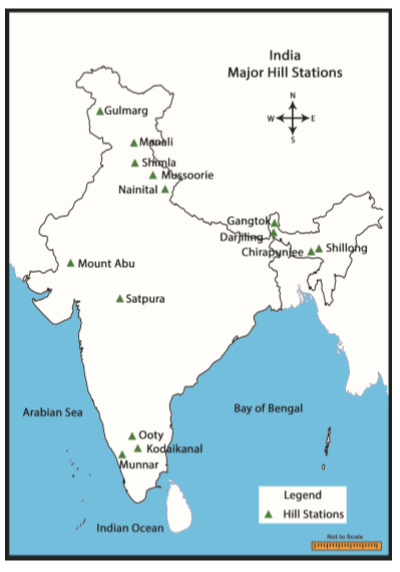
The beautiful hill stations in India
- Kodaikanal, Ooty – Tamil Nadu
- Nainital, Mussoorie – Uttarakhand
- Darjeeling – West Bengal
- Gulmarg – Jammu & Kashmir
- Shillong – Meghalaya
- Shimla, Manali – Himachal Pradesh
- Munnar – Kerala
- Gangtok – Sikkim
Water falls in India
- In India there are many spectacular and wonderful waterfalls covered by dense forest, huge walls of rock and lush green trees.
- Among these waterfalls, some are seasonal, while some are perennial.
- Few of the amazing waterfalls are in swing during the monsoon season.
- This season brings lot of tourists to these bubbling waterfall sites. Notable waterfalls of India are given below:

Wild life and Bird Sanctuaries
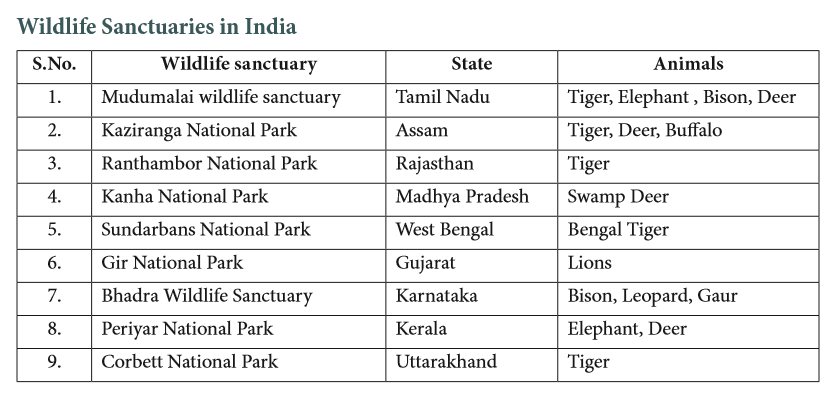
- India possesses a wide range of forests and grasslands. Diversity of these lands makes it one of the hotspot for flora and fauna.
- The dense and dark forest of Indian States provides suitable habitat for a wide and an unique variety of animals and birds.
- Royal Bengal Tigers, Indian Lions, Elephants, Rhinoceros, Indian leopard and Reptiles are the major tourist attractions.
- Bird sanctuaries attract attention for their exclusive variety of birds.
- Diverse range of climate of India invite birds from remote places to feed, breed and to nurture their young ones in the Indian bird sanctuaries.
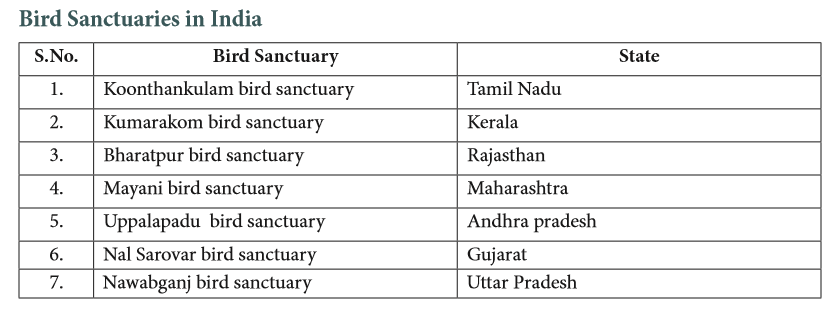
Beaches
- India is a country with 7517 km long coastline comprising the most beautiful beaches bounded by Arabian sea and Bay of Bengal.
- Indian beaches are enriched with diverse coastal land forms filled with aquatic flora and fauna.
- Lush backwater in the lagoons of Kerala and picturesque beaches of Goa such as calangute, Aguda are the notable tourist destinations for water sports activities.
- The most charming and enchanting beaches of India are listed below.
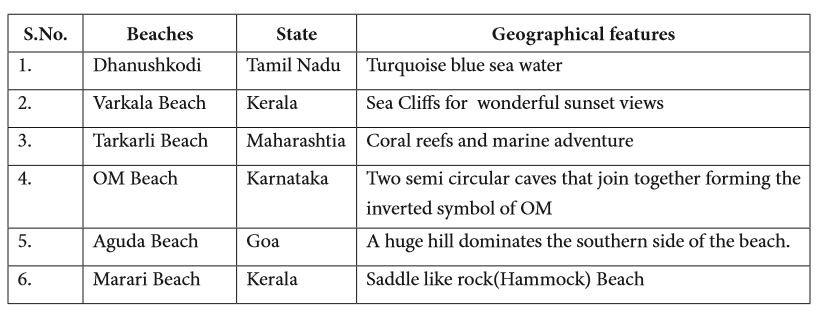
Tourist Attraction in Tamil Nadu
- Tamil Nadu has various tourist attractions like religious centres, spiritual retreat centres, beaches, hill stations, waterfalls, wildlife, art, culture, architecture, crafts, heritage monuments etc.
- The Government of Tamil Nadu has recognized the importance of tourism long ago and facilitated its development in desired directions.
- Exploring new avenues like medical tourism and adventure tourism in the past decades have helped Tamil Nadu tourism to achieve more than twenty percent annual growth.
- Tamil Nadu earns the largest share of income from tourism in India.
Religious Tourism
- Tamil Nadu is a state popularly known as land of Temples and has been the greatest source for spiritual rejunuvation for travellers all over the world.
- The state is home to around 33,000 ancient temples that mainly belongs to Dravidian style of architecture.
- Some of the world renowned religious destinations are as follows:
- Thanjavur Big temple
- Madurai Meenakshi temple
- Rameswaram Ramanathaswami temple
- Temples of Kancheepuram
- Velankanni Madha church
- Nagore Dargah
Hill Stations in Tamil Nadu
- Tamil Nadu being situated in the Southern end of the Western and Eastern Ghats, is the home for several hill stations.
- Popular among them are Udagamandalam (Ooty), Kodaikanal, Yercaud, Coonoor, Valparai, Yelagiri, Sirumalai, Kalrayan Hills and Palani Hills, Shevroy hills and Cardamom Hills.
- They are also abodes of thick forest and wild life.
- Ooty – Queen of Hills
- Yercaud – Lake forest (Poor Man’s Ooty)
- Yelagiri – 14 hairpin bends
- Kodaikanal – Princess of Hill Stations
- Kotagiri – Green Hills
- Velliangiri Hills – Kailash of the South
- Kolli Hills – motor able terrain with 70 hairpin bends
- Anaimalai Hills – Top slip
- Meghamalai – High wavy mountains
- Javadi – Nature’s Heaven
Waterfalls in Tamil Nadu

- Mountains and rivers of Tamil Nadu combined together created many endearing waterfalls.
- Waterfalls in Tamil Nadu with its inspiring natural wonders attracts many tourists.
- A trek amidst thick green trees, steep hills and a bath in the gushing water is most rejuvenating.
- Here is the list of famous water falls of Tamil Nadu.

Wildlife and Bird Sanctuaries in Tamil Nadu
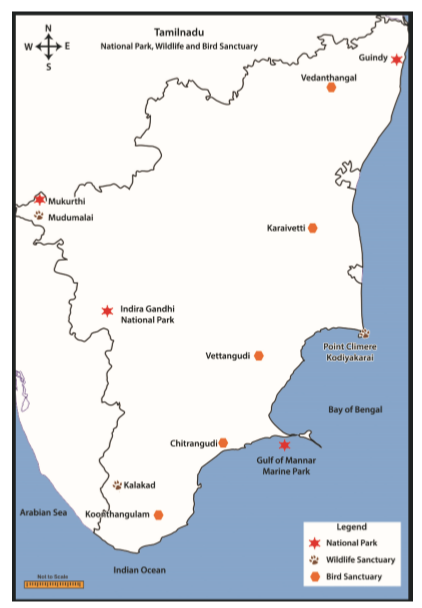
- Wildlife sanctuary in Tamil Nadu includes Bird sanctuaries and National Parks.
- Tamil Nadu is also well known for the diverse natural heritage that it possesses.
- Hence tourists are highly excited about the wildlife tour across the state.
- The total area of Tamil Nadu is approximately 130,058 sq.km. 17.6% of the land area comprises of thick forests.
- Visitors will get to watch a smooth blend of wet evergreen forest, dry and wet deciduous forests, grasslands, sholas, mangroves and thorny scrubs.
- Besides varied natural vegetation, another prized possession of Tamil Nadu is wildlife Sanctuaries including Tiger, Elephant, Deer, Monkey, Bison etc., for protecting the entire flora and fauna. Wildlife Sanctuaries of the state are enlisted below:

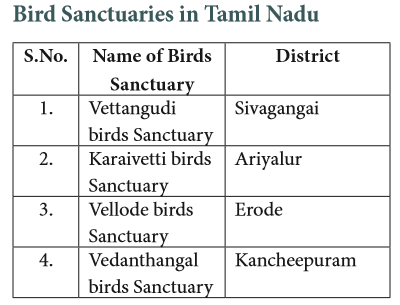
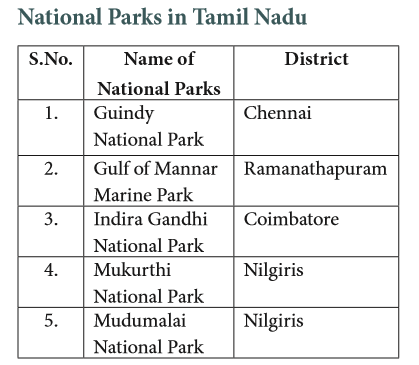
Beaches in Tamil Nadu
- Tamil Nadu being a Coastal state in India which consists of several beaches.
- Some of them are world famous tourist spots.
- Beach is a lovely place to hang around with friends, families and kids. All these are ideal destinations for sun bath relaxation and water sports activities.
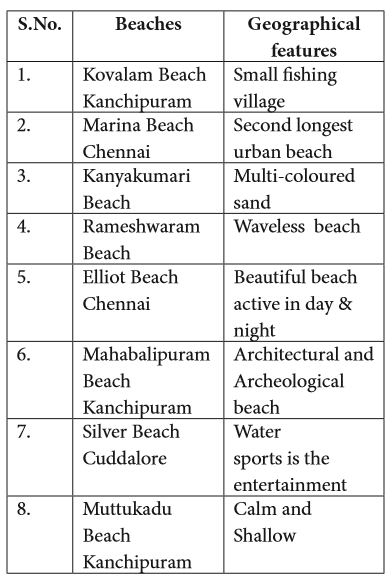
Environmental Impact of Tourism
The quality of the environment is essential for tourism. The tourism industry created several positive and negative impacts on the environment.
Positive Impacts
- Direct financial Contributions
- Contributions to government revenues
- Improved environmental management and planning
- Increasing environmental awareness
- Protection and reservation of environment
Negative Impacts
1. Depletion of Natural Resources
- Water resources
- Local resources
- Land degradation
2. Pollution
- Air and Noise Pollution
- Solid Waste and Litering
- Sewage
3. Destruction and Alteration of Eco system
- Air
- Water
- Soil.
More to Know:
- Push factors in Tourism are Prestige Pull factors in Tourism are Amenities.
- ITC – Inclusive Tour Charter
- IATA – International Air Transport Association
- IATO – Indian Association of Tour Operators
- TAAI – Travel Agents Association of India
- TTTHA – Tamil Nadu Tour Travel and Hospitality Association
- TTDC – Tamil Nadu Tourism Development Corporation
Game Reserves:
An area of land set aside for the protection of wild animals.
Inbound Tourism:
Touring within the native country.
Outbound Tourism:
Touring in foreign countries
- VISA –A document issued to a person (or) a stamp marked on the passport of a person who wants to visit other country.
- Tourist VISA – Recreation sight seeing
- Student VISA – Higher education
- Employment VISA – Work in a country
- Medical VISA – Medical treatment in a reputed hospital of a country
Gastronomy refers to an aspect of cultural tourism.
